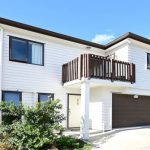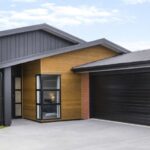While there was talk of the housing market taking a dip, Pipe said that could be a good thing for some. “We felt that every time we made an offering and it wasn’t accepted, something better would come up. I feel like that’s the trend we’re entering now. We are entering a buyers’ market. This month REINZ reported that the West Coast was the only region in New Zealand with a rental yield of more than 5%, suggesting it is the best spot for investors. While Kiwis have closed borders and are unable to travel, property remains a focus. This was true for all residential dwellings, but apartments were the most notable. Two regions have buckered the low listing trend: Hawke’s Bay (up 15%) and Wellington (up 14%).
The average asking price dropped in Gisborne, Wellington and Otago by less than 1% month-on-month. This was also the case for Southland. “The average asking price went down nationally and in 11 of the 19 regions in February, compared to the previous months. While it is too early to call this a trend, if vendors are asking less for their properties in February than they did in January, it could suggest a market slowdown is on the way,” says Vanessa. “With February 2022 new listings reflecting February 2018 levels and stock increasing almost 50% year-on-year, we might be seeing some changes to the property market in 2022,” says Vanessa.
Stock is the total number of residential dwellings that are for sale on realestate.co.nz on the penultimate day of the month. Read more about Otahuhu agent Candace Williams here. Many first-home buyers will look to apartment dwellings and townhouses as they attempt to get on the ladder, with asking prices rising month after month. However, Wellington was also one region that saw both total stock (up 21.9%), and new listings (up 14.5%), increase year-on-year.
The median annual residential property prices in New Zealand rose by 20.5% from $730,300 in Jan 2021 to $880,000 January 2022. Although median prices fell 2.2% in December ($900,000.), REINZ’s seasonally adjusted figures show that prices held up slightly better. They showed a 1.4% increase when moving from December to Jan. Real-time data from realestate.co.nz shows that the September average asking price slowed by -2.85% month-over-month, dropping to $865,348, which allows for seasonal adjustment. According to realestate.co.nz, October saw ten of New Zealand’s 19 regional areas set a new 14-year-old record for asking prices. This trend has been evident since COVID-19 arrived on our shores. Vanessa Williams, spokesperson for the site, said change but it’s hard to pinpoint what could slow down rising asking prices. While Auckland and other major centres are the most prominent in property trends, the average asking price has increased the most in regional New Zealand over the past ten years.
Over the last 22 years of all Auckland City suburbs (Jan 2000 – Dec 2021), Point Chevalier had the fastest-growing house, at 9.82% per year. The median Auckland house price increased by $801,800 between December 2011 and December 2021 (from $488,000.00 to $1,290,000.000). The median Auckland house price grew by 8.15% between Jan 2000 & Dec 2021 (from $230,000 to $1,290,000.)
The rise in house prices was influenced by the migration curve that followed the COVID-19 pandemic. However, when the borders open Wilson says there could be a “possible exodus of younger Kiwis to countries with higher wages and better job opportunities” which could ease some pressure on the housing market. The most expensive suburb is Long Bay, which has a median house price of $1,713,800.
The Du Val Group is New Zealand’s largest residential-led property group, providing affordable and aspirational housing in the Auckland market. With in-house architecture, development management, wholesale funds management, construction, facilities and property management teams, Du Val provides end to end solutions to improve housing outcomes for occupiers and owners alike. According to Auckland Council, the high average increases in these areas have been caused by intensification in recent years. On top of this, standalone dwellings have increased in value more than apartments and flats. This means that areas with more wealth, such as the CBD or inner-city fringe, will likely see lower rates of growth.
Off the back of REINZ’s data, KiwiBank felt the housing market has continued to cool and that the data paints a picture of a market in decline. She said all of this may in turn further ease price growth in the coming months. “Supply has also increased over recent months creating less competition amongst buyers,” he added. Residential property values continue to climb across the Hawke’s Bay region, albeit at a slower pace than recently reported highs.





